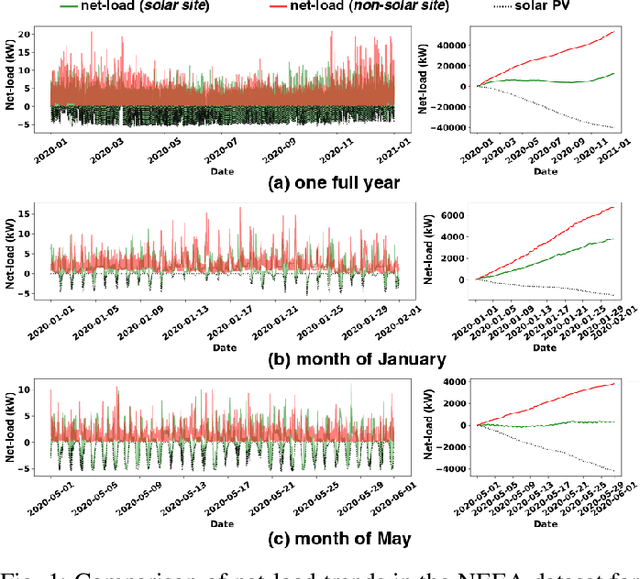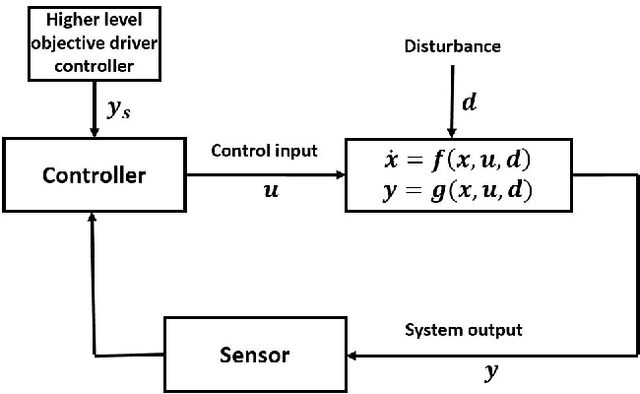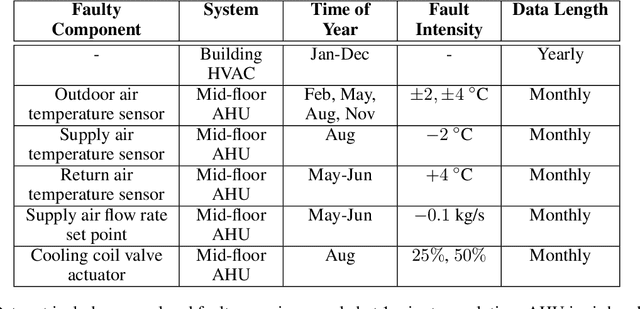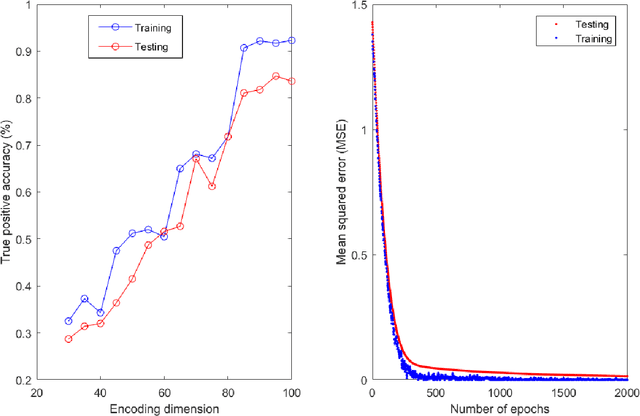Indrasis Chakraborty
Who should I trust? A Visual Analytics Approach for Comparing Net Load Forecasting Models
Jul 31, 2024Abstract:Net load forecasting is crucial for energy planning and facilitating informed decision-making regarding trade and load distributions. However, evaluating forecasting models' performance against benchmark models remains challenging, thereby impeding experts' trust in the model's performance. In this context, there is a demand for technological interventions that allow scientists to compare models across various timeframes and solar penetration levels. This paper introduces a visual analytics-based application designed to compare the performance of deep-learning-based net load forecasting models with other models for probabilistic net load forecasting. This application employs carefully selected visual analytic interventions, enabling users to discern differences in model performance across different solar penetration levels, dataset resolutions, and hours of the day over multiple months. We also present observations made using our application through a case study, demonstrating the effectiveness of visualizations in aiding scientists in making informed decisions and enhancing trust in net load forecasting models.
Forte: An Interactive Visual Analytic Tool for Trust-Augmented Net Load Forecasting
Nov 10, 2023

Abstract:Accurate net load forecasting is vital for energy planning, aiding decisions on trade and load distribution. However, assessing the performance of forecasting models across diverse input variables, like temperature and humidity, remains challenging, particularly for eliciting a high degree of trust in the model outcomes. In this context, there is a growing need for data-driven technological interventions to aid scientists in comprehending how models react to both noisy and clean input variables, thus shedding light on complex behaviors and fostering confidence in the outcomes. In this paper, we present Forte, a visual analytics-based application to explore deep probabilistic net load forecasting models across various input variables and understand the error rates for different scenarios. With carefully designed visual interventions, this web-based interface empowers scientists to derive insights about model performance by simulating diverse scenarios, facilitating an informed decision-making process. We discuss observations made using Forte and demonstrate the effectiveness of visualization techniques to provide valuable insights into the correlation between weather inputs and net load forecasts, ultimately advancing grid capabilities by improving trust in forecasting models.
KPF-AE-LSTM: A Deep Probabilistic Model for Net-Load Forecasting in High Solar Scenarios
Mar 05, 2022



Abstract:With the expected rise in behind-the-meter solar penetration within the distribution networks, there is a need to develop time-series forecasting methods that can reliably predict the net-load, accurately quantifying its uncertainty and variability. This paper presents a deep learning method to generate probabilistic forecasts of day-ahead net-load at 15-min resolution, at various solar penetration levels. Our proposed deep-learning based architecture utilizes the dimensional reduction, from a higher-dimensional input to a lower-dimensional latent space, via a convolutional Autoencoder (AE). The extracted features from AE are then utilized to generate probability distributions across the latent space, by passing the features through a kernel-embedded Perron-Frobenius (kPF) operator. Finally, long short-term memory (LSTM) layers are used to synthesize time-series probability distributions of the forecasted net-load, from the latent space distributions. The models are shown to deliver superior forecast performance (as per several metrics), as well as maintain superior training efficiency, in comparison to existing benchmark models. Detailed analysis is carried out to evaluate the model performance across various solar penetration levels (up to 50\%), prediction horizons (e.g., 15\,min and 24\,hr ahead), and aggregation level of houses, as well as its robustness against missing measurements.
Generative Adversarial Network based Autoencoder: Application to fault detection problem for closed loop dynamical systems
Oct 19, 2018



Abstract:Fault detection problem for closed loop uncertain dynamical systems, is investigated in this paper, using different deep learning based methods. Traditional classifier based method does not perform well, because of the inherent difficulty of detecting system level faults for closed loop dynamical system. Specifically, acting controller in any closed loop dynamical system, works to reduce the effect of system level faults. A novel Generative Adversarial based deep Autoencoder is designed to classify datasets under normal and faulty operating conditions. This proposed network performs significantly well when compared to any available classifier based methods, and moreover, does not require labeled fault incorporated datasets for training purpose. Finally, this aforementioned network's performance is tested on a high complexity building energy system dataset.
Virtual Battery Parameter Identification using Transfer Learning based Stacked Autoencoder
Oct 10, 2018



Abstract:Recent studies have shown that the aggregated dynamic flexibility of an ensemble of thermostatic loads can be modeled in the form of a virtual battery. The existing methods for computing the virtual battery parameters require the knowledge of the first-principle models and parameter values of the loads in the ensemble. In real-world applications, however, it is likely that the only available information are end-use measurements such as power consumption, room temperature, device on/off status, etc., while very little about the individual load models and parameters are known. We propose a transfer learning based deep network framework for calculating virtual battery state of a given ensemble of flexible thermostatic loads, from the available end-use measurements. This proposed framework extracts first order virtual battery model parameters for the given ensemble. We illustrate the effectiveness of this novel framework on different ensembles of ACs and WHs.
 Add to Chrome
Add to Chrome Add to Firefox
Add to Firefox Add to Edge
Add to Edge